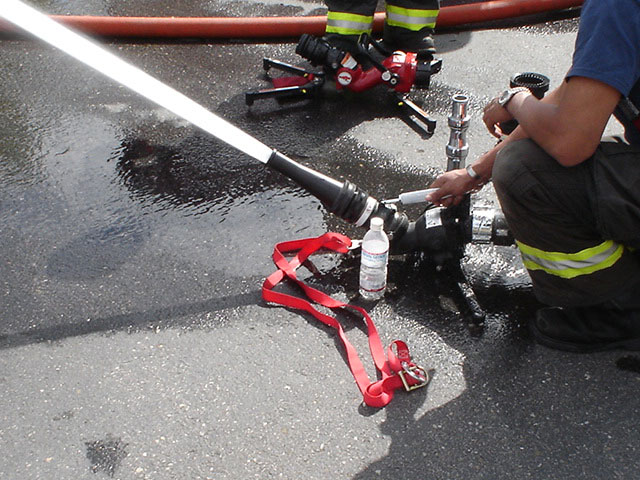
By Brian Brush
I can see the value in lighter weight, more portable, and compact ground monitors. I have been in classes where we set them up at man doors for better reach and coverage in to big box style structures and even heard it presented as an option for high-rise applications off of standpipes for well-involved floors where an advance may not be permitted. As firefighters, we can see there are certain problem situations where these can serve as a solution. The issue I have is when the vendors bring these to the fire service as a solution in search of a problem and we buy in to it.

“XXX Monitors are the most advanced initial attack portable monitor ever designed for high-performance fire suppression. Realizing that the ability to maximize flows while dealing with limited manning is a reality in today’s fire service, XXX has developed the lightest, easiest to operate, and by far the safest portable ground monitor in the world. XXX will set the standard for rugged, high-flow, initial fire attack.” — XXX Company Product Page
Wow! I want to “achieve high performance fire suppression,” I need to “maximize flows while dealing with limited manning,” and I think that “high flow, initial fire attack” is important to get us as firefighters ahead of the power curve in the modern fire environment.
However, you probably do not need to buy anything to get this done. And to be honest, quickly deploying a master stream to the ground in front of a structure is not as much an “attack” as it is a rapidly established defensive position. So let’s take a look at a simple, readily available method for a true “high-flow, initial fire attack” with “limited manning.”
Let’s talk about these “Blitz Attack” situations where your engine company is arriving behind the ball on a well-advanced fire and if you wait to act the battle will be lost.
Arrival on this fire, with a three-person engine company. From the station there was a decent column of smoke and multiple reports through dispatch so when you turned the block and saw fire you stopped and dropped the firefighter to catch a hydrant. You layout 300 feet of supply and give your report as you hear the driver’s door slam shut because he is headed to the pump panel to get ready to flow.
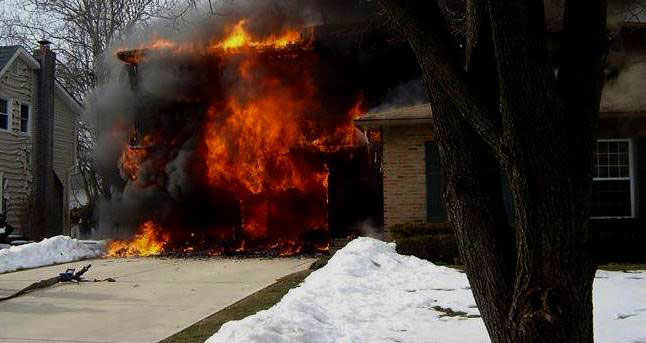
The salesmen of XXX have clearly presented this situation for the department that arrived at the fire in this picture, because we see the portable ground monitor in the driveway. This monitor still has a bale to be operated and a nozzle to be directed. Furthermore once this fire is knocked down by the high volume flow another line needs to be deployed to follow up unless you plan on taking this inside; it is “the lightest, easiest to operate, and by far the safest portable ground monitor in the world.”
Drill of the Week: Blitz Attack
I believe that their claim is untrue and the lightest, easiest-to-operate ground monitor is the 2 ½-inch hand line with a smoothbore nozzle. It is also well suited for a “high-flow, initial fire attack” with “limited manning” and odds are your engine already has it available. It may not be brightly painted and carry big adjectives and price tags, but believe me it can get the job done and it can be operated by the same single firefighter it would take to operate this “portable ground monitor.” The 2 ½-inch handline has the added benefit of being a nozzle on a hoseline, so when you do achieve a big knock down and your hydrant man does join back up with you, he doesn’t have to pull another line for follow up because that same line can go inside.
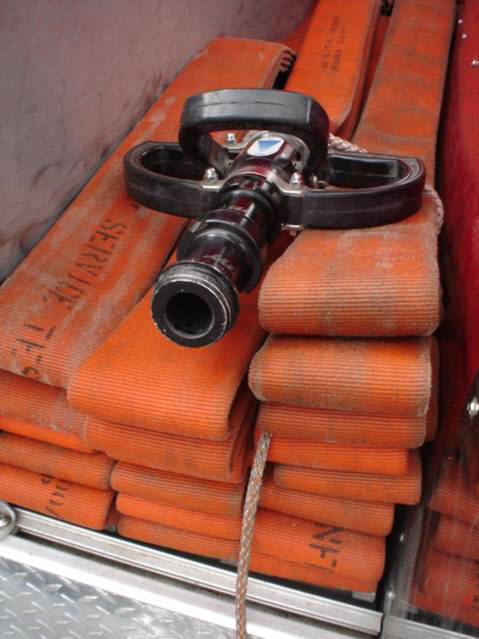
The 2 ½-inch handline in this picture is capable of flowing 328 gallons per minute with a nozzle pressure of just 50 psi which keeps the nozzle reaction forces low. The flat load in a full bed provides versatility in length and simplicity in deployment.

For debate prevention, I am not an exterior firefighter, I am an efficient firefighter and I believe that if we have big fire upon arrival we should deliver big water upon arrival with the resources available even if it is just one person, but that is just our first move. THE KEY TO AN ATTACK IS THE FOLLOW UP AND MAINTAINING FORWARD PROGRESS, otherwise all you did was rapidly establish a defensive position.
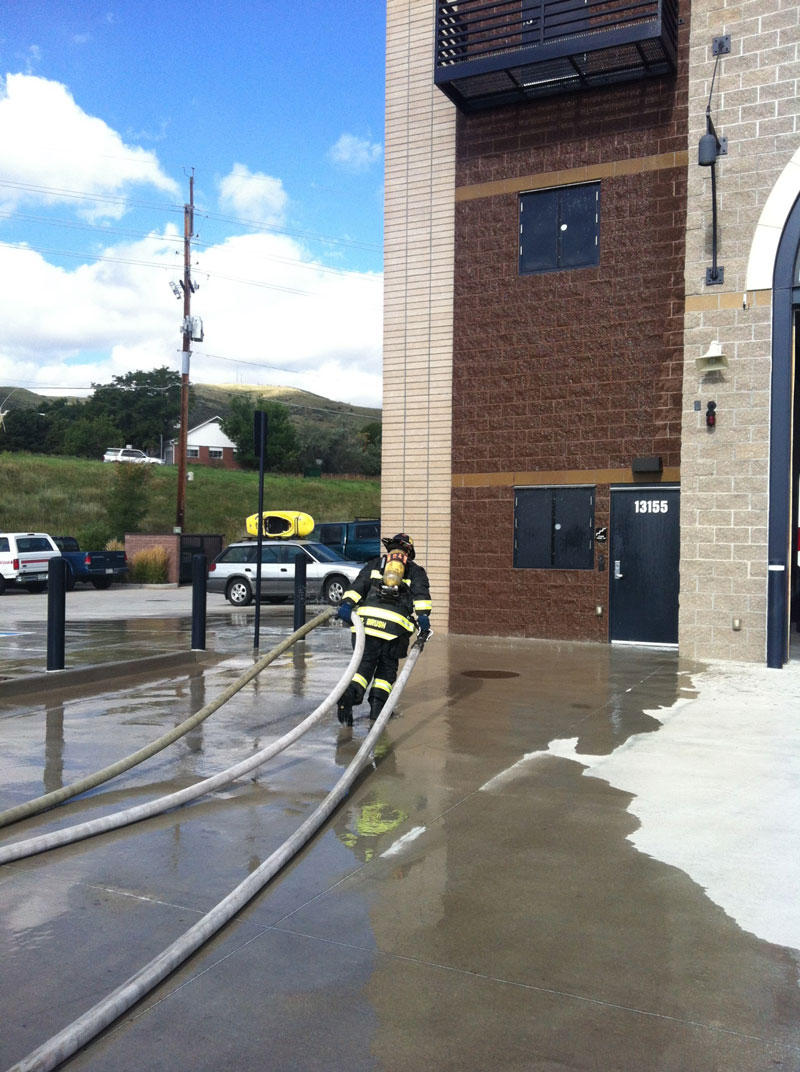
The point is better displayed in this second video where a second floor apartment is well off and auto exposing. The first due rig could hit it with the deck gun but it would be limited by positioning and potentially block out the truck. The first due rig could deploy a portable ground monitor but after the knockdown it would just be left in the parking lot as another line would need to be deployed to make the stairs and follow up.
The best practice is using the high volume and flexibility of the 2 ½-inch handline for both the initial knock down and the ever so important immediate follow up and follow through of fire attack even on the interior. The hard hit put us back on top of this fire; we shouldn’t allow this ground to be lost to inefficiencies.
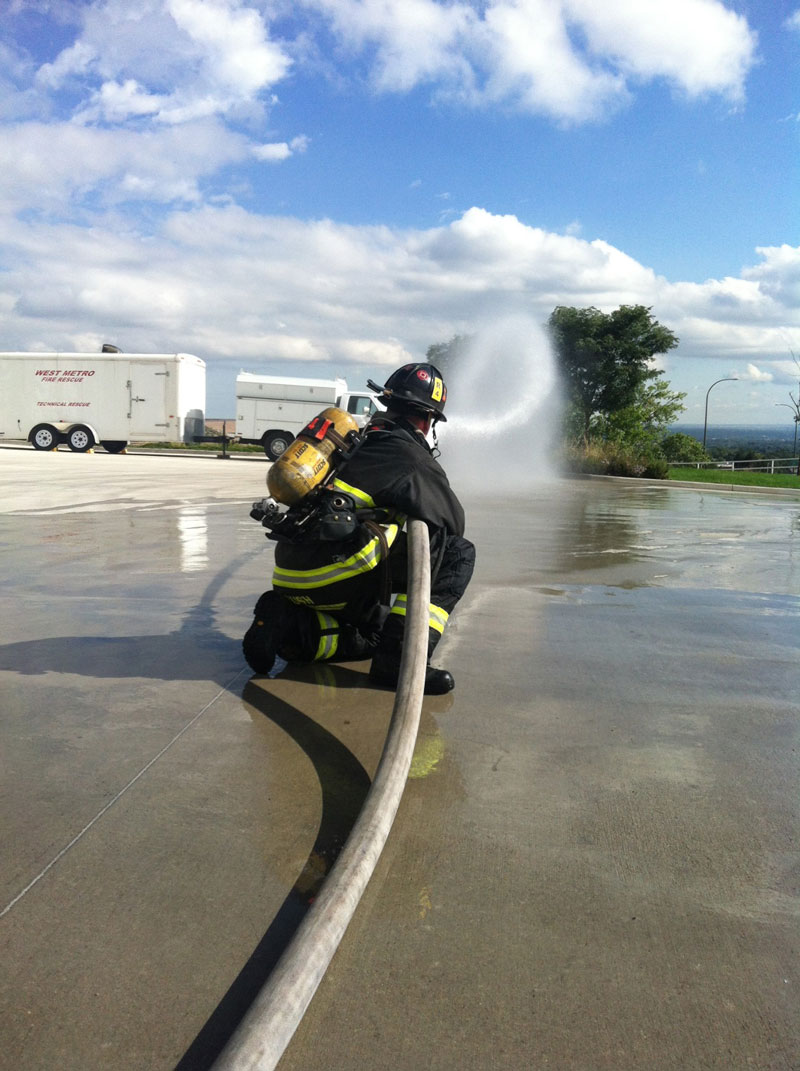
With good apparatus set up, nozzle selection, and practice you can do more with what you have so you don’t have to buy more. Join me at FDIC 2014 for “Gaining Relative Superiority: The 2 ½-inch Handline” as we discuss how others have created models for taking the curse of low staffing and turning it into the recipe for highly efficient operations.
BRIAN BRUSH is a lieutenant at West Metro Fire in Lakewood, Colorado, and is assigned to the district’s heavy rescue company. He is a 16-year veteran of the fire service, having served in volunteer, seasonal, and career positions in California, Oklahoma, and Colorado. He has a bachelor’s degree in fire and emergency services administration.

